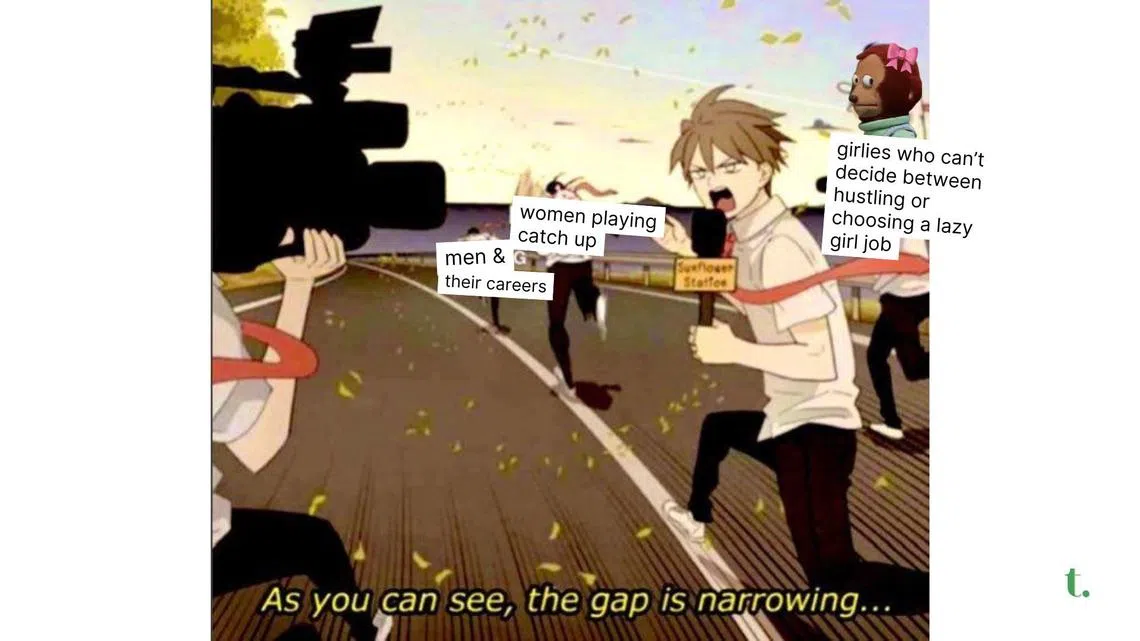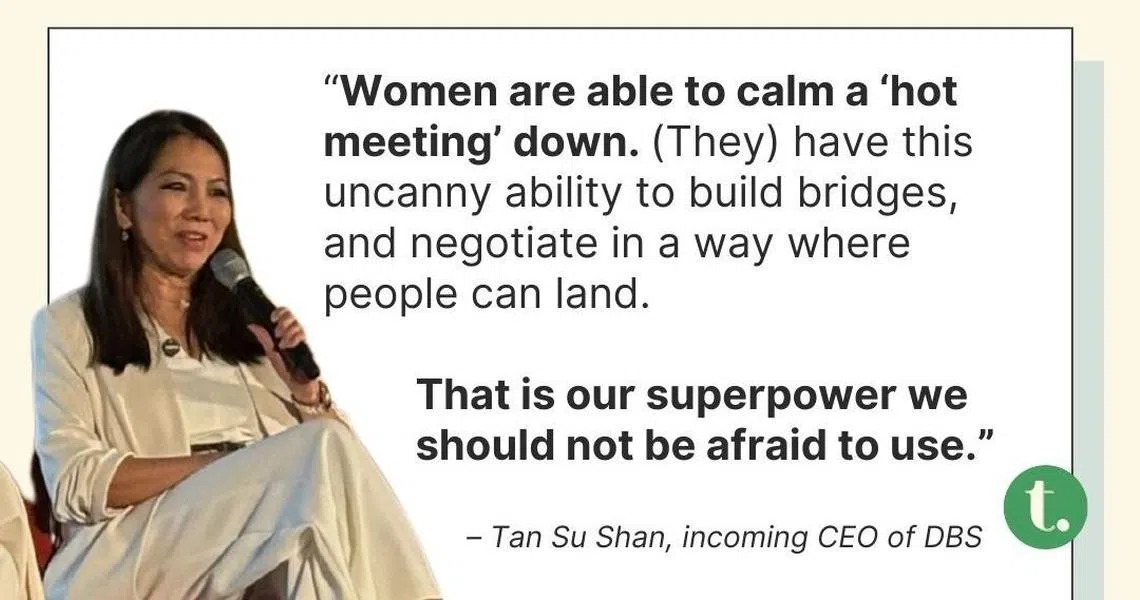🎻 Are women doomed to play second fiddle to men at work?

Straight to your inbox. Money, career and life hacks to help young adults stay ahead.
- Find out more and sign up for thrive at bt.sg/thrive
✅ Good news, but…
We can’t discount the recent progress made to help women be more represented and supported in Singapore’s workforce.
In the Budget 2025 debate last week, a number of NTUC initiatives designed to help women at work or women interested in re-entering the workforce were highlighted.
These include a women’s mentorship programme and initiatives for flexible work arrangements for those who wish to return to the workforce, such as female caregivers.
Such work appears to have paid off. According to data from the Ministry of Manpower (MOM), there was an increase in female employment to 78.3 per cent in 2024, up from 76.3 per cent in 2023.
But while women are more employed and well-educated in recent times, are they faring better at the workplace?
A quick scan of the Internet reveals that there is still room for improvement. For example, full-time female employees aged 25 to 54 still earned nearly 15 per cent lower than their male counterparts as of 2023, data from MOM reflected.
A 2022 survey by NTUC and the PAP women’s wing found that 23 per cent of respondents believe there is gender discrimination in the workplace. One in 10 women surveyed said she had been passed over for promotion or career advancement – twice as many as the men in the poll.
And while the new Workplace Fairness Act – which includes “sex” as one of the five protected characteristics – was passed on Jan 8, gender discrimination at the workplace still needs better monitoring.
So, while we’ve seen some inroads for women in workplaces, I wonder if we will always trail behind men in the areas of pay, career advancement and work opportunities.
SEE ALSO
Take women’s representation on the boards of the top 100 companies listed on the Singapore Exchange as an example. It rose to 22.7 per cent in 2023, up from 17.7 per cent in 2020.
In the eyes of most, it’s progress. For young women with big dreams, however, that’s still over 75 per cent of males in leadership, and it doesn’t inspire confidence.

💡 I’d be the (wo)man for the job
So is the solution to act like a man?
That’s a myth which needs to be debunked, according to local poet and playwright Amanda Chong, who also works as a lawyer.
At a recent thrive event on finding the right career, she shared that bringing her whole self to the workplace – that is emotionally attuned and empathetic – has been useful in her work in negotiations.
“Even that typically softer side can be tremendously effective (at work),” she says.
“We don’t have to apologise for certain characteristics we have – we just have to adapt them as strengths at the workplace.”
Another woman leader who can attest to this is the incoming DBS CEO Tan Su Shan. When asked about a skill women don’t leverage enough at the workplace, her response, too, was: empathy.

If you think that traits such as community building and being nurturing are a handicap for women at work, think again. These are strengths that women should actually use to their advantage.
But to be clear, women don’t have to fit any particular mould just to advance in their careers. If they’re naturally nurturing, that’s great. But if they’re assertive and direct, they also shouldn’t be penalised. Don’t hide your best qualities, which can actually help you stand out and be your best self at work.
💼🎀 Be that girlboss
The question now is: How can women be their best selves at work while demonstrating peak professionalism? Here are some tips 💪:
- Display empathy with good boundaries: Empathy can build good interpersonal relationships at work, but you can’t be the office therapist. Know how to draw healthy, professional boundaries while offering a listening ear to the right people when need be.
- Be intuitive without second-guessing yourself: Intuition can be very useful at the workplace, but overthinking and hyperfixating on things are not. Learn how to differentiate the two, and your emotional intelligence can take you far in your career.
- Build community while being strategic: At the workplace, women tend to be more likely to volunteer for or be assigned low-visibility tasks such as organising team parties or coffee runs – tasks that may not directly contribute to career advancement. If you find the women on the team repeatedly being tasked to do such “office housework”, let your bosses know to spread the work out. More importantly, however, communicate with them on what their priorities are and how you can position yourself for success.
According to McKinsey’s Women in the Workplace 2024 report, it’ll take 50 years to achieve gender parity for all women. Yikes.
But we don’t have to sit around for decades for small steps to begin just because change isn’t happening overnight.
For young women in the workforce, real change can begin when we learn to set clear boundaries, be strategic in our careers and take steps to advocate for ourselves.
TL;DR
- Data from MOM reflects an increase in female employment to 78.3 per cent in 2024, up from 76.3 per cent in the previous year 📈🤝
- While the gender gaps in employment and pay have narrowed, more scrutiny on anti-discrimination policies can be afforded to protect female employees in particular
- You don’t have to become a man to be more effective at work; simply embrace your core competencies 📋 (after all, being someone else is not a solution 🙅🏻♀️!)
Decoding Asia newsletter: your guide to navigating Asia in a new global order. Sign up here to get Decoding Asia newsletter. Delivered to your inbox. Free.
Copyright SPH Media. All rights reserved.
